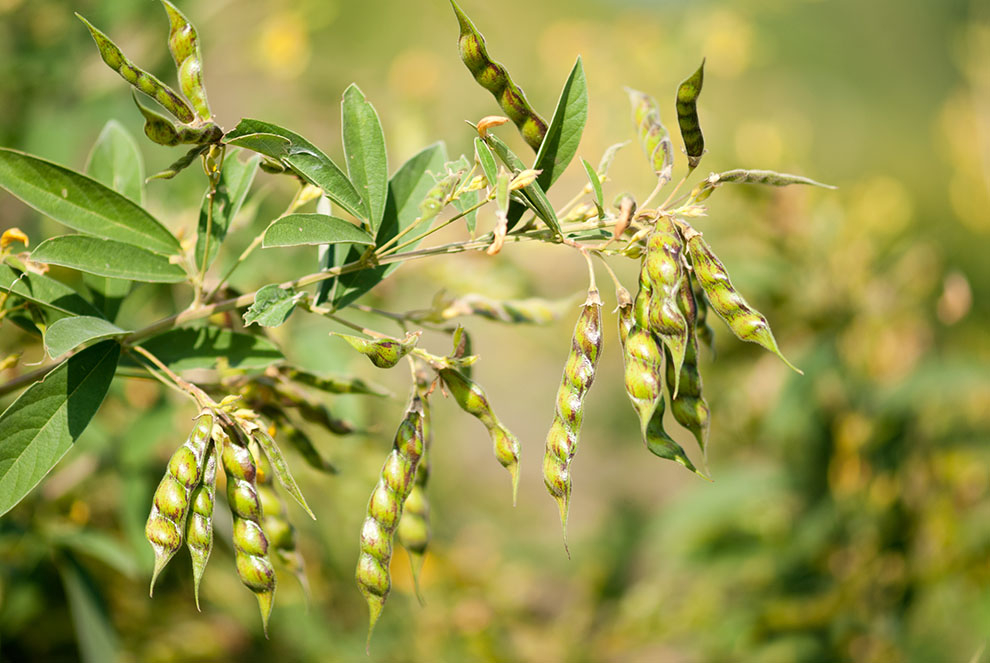
The pigeon pea (Cajanus cajan) is a perennial legume from the family Fabaceae. Since its domestication in India at least 3,500 years ago, its seeds have become a common food grain in Asia, Africa, and Latin America. It is consumed on a large scale mainly in south Asia and is a major source of protein for the population of that subcontinent.
Pigeon pea is an important legume crop of rained agriculture in the semiarid tropics. The Indian subcontinent, eastern Africa and Central America, in that order, are the world's three main pigeon pea-producing regions. Pigeon peas are cultivated in more than 25 tropical and subtropical countries, either as a sole crop or intermixed with cereals, such as sorghum (Sorghum bicolor), pearl millet (Pennisetum glaucum), or maize (Zea mays), or with other legumes, such as peanuts (Arachis hypogaea). Being a legume capable of symbiosis with Rhizobia, the pigeon pea enriches soil through symbiotic nitrogen fixation.
The crop is cultivated on marginal land by resource-poor farmers, who commonly grow traditional medium- and long-duration (5–11 months)landraces. Short-duration pigeon peas (3–4 months) suitable for multiple cropping have recently been developed. Traditionally, the use of such input as fertilizers, weeding, irrigation, and pesticides is minimal, so present yield levels are low (average = 700 kg/ha). Greater attention is now being given to managing the crop because it is in high demand at remunerative prices.



